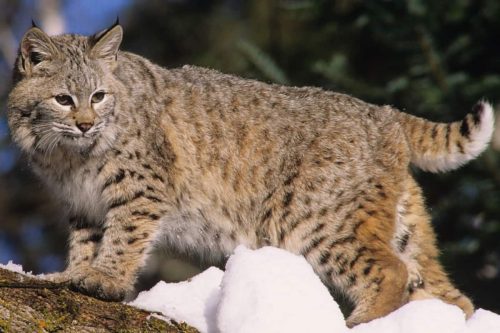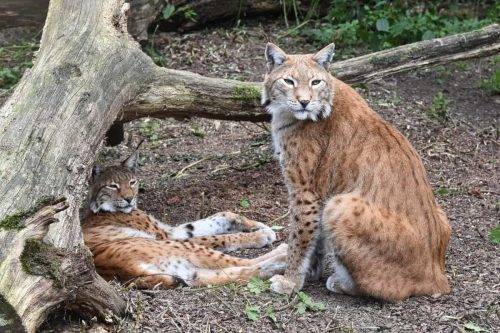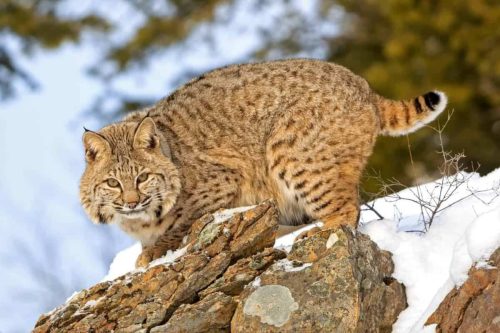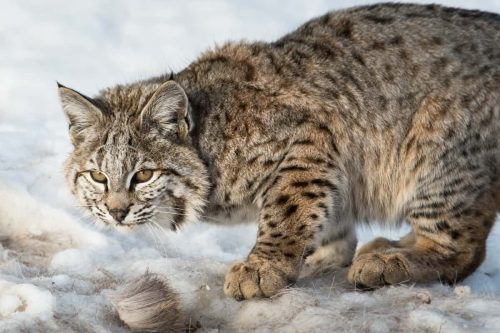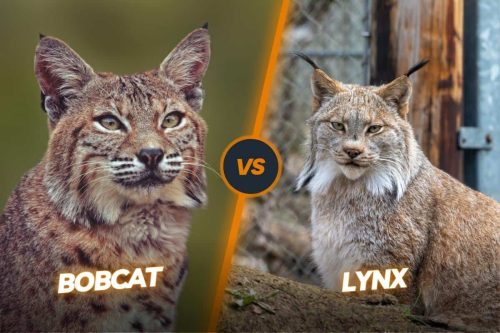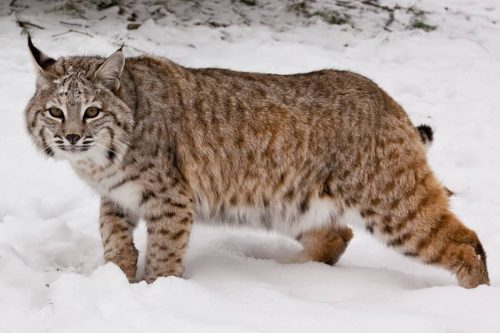Bobcats in Ohio: A Rare and Endangered Specie
Our planet earth is home to almost 38 wild cat species from very tiny rusty spotted cat to very big Siberian tiger-like cats which is almost 10 feet long. Six of these wild cat species are native to North America. In Ohio, you can only find one of these wild cats named bobcats. Bobcats are a very well-known and highly fascinating specie of wild cats. The enticing appearance and quiet disposition of the bobcats have kept people captivated for several years.
Bobcats are carnivores in nature having weighed around 20-35 pounds with an average lifespan of almost 7 to 10 years. These cats are very aggressive and fierce fighters but don’t attack human beings unless these cats are provoked. In this article, we are going to ascertain the status of bobcats in Oho state to let you know whether these cats are endangered or not in this state. You will get to know everything you need to know about the bobcats in Ohio.

Contents
Ecology of Ohio State
Ohio is among the twelve states of the Midwest which are home to almost four major habitats of our ecosystem. You can find forests, prairies, great lakes as well as wetlands in Ohio. This depicts the diversity of Ohio state’s landscape. That’s why Ohio State is highly suitable for a variety of wild animals like cockroaches, deer, bullfrogs, doves, turtles, bears, coyotes, and bobcats.
Are there bobcats in Ohio?

Yes, bobcats are available at Ohio State. The state used to be home to many bobcats in the 18th and 19th centuries. But these cats disappeared at the start of the 19th. Throughout the 20th century, you could rarely find these cats in Ohio State. These cats had gone almost extinct from Ohio State. However, good thing is that these cats are returning very rapidly.
According to the Ohio department of natural resources, there were almost 500 bobcats sighted in Ohio in 2020. Only the Washington county residents reported almost 28 bobcats in their area. Now they have been enlisted among the top predators of Ohio State same as other wild animals like hawks, bald eagles, and coyotes.
Also, read our article for Bobcats in New Jersey
The historical presence of bobcats in Ohio
Historically, Ohio is very well known for its bobcat population. During the arrival of European settlers in Ohio State, these cats were the main source of money and food for them. However, when the trees were cut down on a very large scale and wetlands were completely drained for the sake of human settlements and farmlands, the population of the bobcats started declining as the natural habitat of the bobcats had been destroyed.
By the 1850s, bobcats were completely eliminated from Ohio State due to excessive fur hunting and habitat loss. It seemed like the bobcats have gone almost extinct at the start of the 19th century as there was no evidence available about these cats in these years. Nevertheless, bobcats have started to appear again in Ohio state since the start of the 21st century due to the rehabilitation of wetlands, marshy areas, abandoned mines, and forests. That’s why we saw the resurgence of these cats in Ohio State.
These cats are now sighted very frequently in many counties of the state. Previously, these cats have been enlisted as endangered species due to their minimal presence and now this status has been changed due to skyrocketing increase in their population in Ohio State in the last ten years.
Where do bobcats live in Ohio?

Bobcats are adaptable to a variety of habitats. They could live anywhere like in forests, swamps, deserts, coastal areas, and scrublands. In Ohio, they have a territory range of almost 6 to 12 miles mainly in the wooded land. Bobcats don’t like to reside in areas like Munroe Falls Metro Park which are close to business activities. These cats mainly prefer to live in areas like the southern and southeastern sides of Ohio which are full of woodlands.
There are still a lot of woodland areas that are uninhabited by these cats and these cats are gradually moving towards these areas. It has been reported that bobcats in Ohio have very strong genetic ties with bobcats living in states like West Virginia, Pennsylvania, and Kentucky. It seems like bobcats recovery in Ohio is happening by the movement of the cats from these states towards Ohio after they find the Ohio habitat again suitable for them.
Why bobcats are coming back to Ohio?
Bobcats were almost close to extinction in the early 1980s but after that several recovery and rehabilitation programs were introduced. Still, it is very difficult to ascertain the exact numbers of bobcats’ population in Ohio state because most of the evidence the biologists get has been found with help of trail cameras.
Overall, there are above 500 sightings reported in different areas of Ohio and most of them are from the southeast part of the state. These sightings are extremely difficult to get by just following the trail as bobcats have a very elusive solitary nature.
Factors responsible for the returning of Bobcats in Ohio
Many factors have played a vital role in the returning back of bobcats in Ohio. This resurgence of the bobcats back to Ohio is actually an environmental success story. The natural habitat of the bobcat was recovered to some extent in the state and resultantly bobcats made their way back to their ancient home.

Forests recovery
With the recovery of forests especially in the southeastern side of the state, bobcats have made a great recovery as they like to reside in areas that are fully covered with trees. These sites have reached near full occupancy. According to the Ohio division of wildlife, bobcats have been sighted in almost 77 of 88 counties of the state.
Being an essential component of our ecosystem, it is a very good omen that the bobcats are coming back to Ohio with the recovery of forests. At the time of European settlements, there were almost 95% wooded areas in Ohio state which were reduced to almost 10-15% at the start of the 20th century.
Nowadays, the forest areas are recovering very fast and almost 1/3rd of the state has again come under very rich forest cover. Southeastern Ohio has become the stronghold of these cats due to its extraordinary forest cover. The researchers have also predicted that the bobcats could also move towards the southwestern and northeastern side of the state as these areas have open habitats and pasturing facilities which bobcats can utilize for foraging purposes. Bobcats could also target small mammals and hares quite easily here.
Human onslaught
The vicious attitude of human beings and excessive hunting of these animals is also responsible for the depletion of their population in Ohio. In the mid-1800s, there were two other wild cats named cougar and Lynx occurred in Ohio along with bobcats.
These cats could not survive the excessive hunting by humans due to commercial reasons and gone extinct from the state for good. There is also no hope of their recovery as there was no sightings of these cats in Ohio till now. Many biologists and conservationists are working and hoping for the recovery of this trio of cats.
For the speedy recovery of these cats, several rules and regulations have been implemented in Ohio. It is strictly prohibited and banned to catch or hunt these cats for commercial or any other reason. It has been advised to report to the wildlife authorities if you witness any bobcats in your territory or even if you find any injured or dead cats on the roads.
River valleys
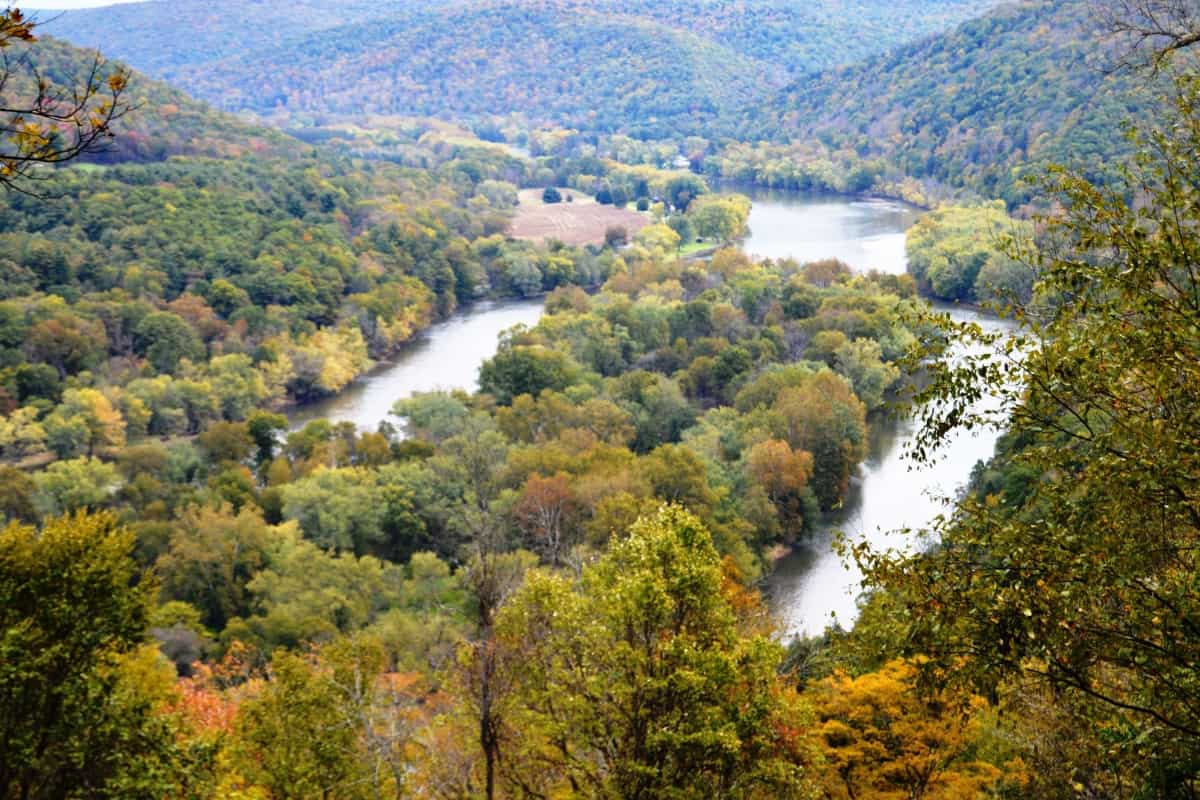
Bobcats are also dispersing across states and counties due to the interconnectivity of river valleys. In this regard, the suitability of the habitat also doesn’t play any main role as bobcats might move in agricultural areas and open landscapes. The river valleys are often interconnected with forest cover.
In this regard, the river valley of Ohio has played a very important role in the movement of bobcats from nearby states. It is also being observed that the bobcats might move to other less suitable areas from southeastern areas due to this type of movement.
When the genetics of the bobcats in Ohio were studied it was found that most of these cats have come from neighboring states like Kentucky, Pennsylvania, and West Virginia. In the southern side of Ohio, almost 90% of the cats have originated from these states.
Rehabilitation programs
Nowadays, it is strictly prohibited to hunt or trap bobcats in Ohio. Nowadays, most bobcats are killed due to roadside accidents. Ohio has very vast highways and it has the fifth largest volume of traffic. That’s why a lot of roadside killings of bobcats happened in the state.
The division of wildlife has started a lot of rehabilitation programs to facilitate these orphaned and injured bobcats. They have set very high standards of rehabilitation and recovery. They also let these cats be released into the wilderness after the complete recovery of these cats. These rehabilitation programs also act as good incentives for the return of bobcats.
Why it is difficult to count bobcats in Ohio?
Many people are asking this question how many bobcats are in Ohio? It is extremely difficult to tell the exact numbers of bobcats in Ohio as most of the sightings were reported by the public and it is difficult to rely on this figure. It might be true or wrong. Other than this, trail cameras were utilized to ascertain the presence of a bobcat somewhere. It is also not a reliable thing as trail cameras might note the same bobcats again and again.
Most people also don’t report the bobcat sightings in Ohio. You might witness all the male bobcats somewhere but it is extremely difficult to witness the female bobcats as these cats have very limited territory and these cats also spend most of their time inside the den with their kittens and occasionally come out only in search of food.
Frequently asked questions
Conclusion
Bobcats are the only known wild cats in Ohio. These cats have gone almost extinct from the state almost 100 years later. Now, these cats are recovering slowly and gradually. Authorities have initiated several programs for the recovery and rehabilitation of these cats in the state. Now, it is prohibited to hunt, kill or trap bobcats in Ohio. That’s these cats are recovering very fast in the state and it is crime to hunt these cats.

Izzy is an experienced ranch worker who has a passion for exploring nature and getting up close to wildlife. With her connections to various animal organizations, Izzy is well-versed in animal care and rehabilitation.

